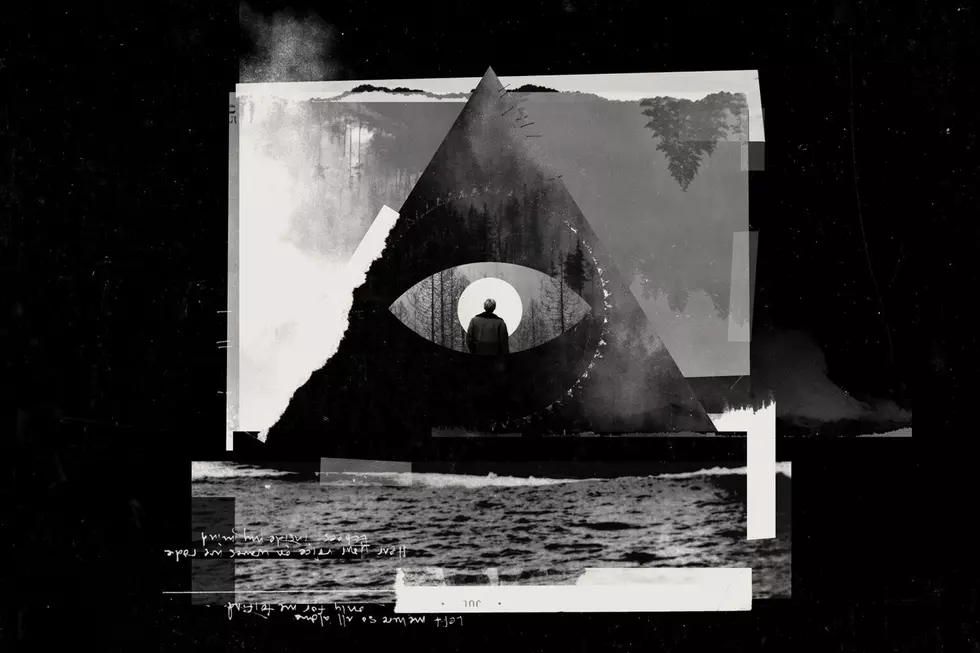
Five Years Ago: Former Alice in Chains Bassist Mike Starr Dies of a Drug Overdose
The dark cloud of drug addiction cast a long shadow over Alice In Chains – one the original members couldn't escape even years after the death of frontman Layne Staley. Five years ago (nine after Staley overdosed in 2002) former bassist Mike Starr also tragically succumbed to addiction.
At 1:42 PM on March 8, 2011, Salt Lake City police arrived at a house on the 1900 block of Richards Street that Starr was sharing with musician Spencer Roddan, after Days of the New singer (and Starr’s latest bandmate) Travis Meeks found Starr’s body and called authorities. Starr reportedly died of a prescription drug overdose after many years of battling for sobriety. He had been arrested for drug possession three weeks prior, after a period that seemed as though for the first time in his adult life, Starr was finally exorcising the demons that had tormented him for so long. He was 44.
Starr’s journey with Alice In Chains began in the mid-’80s when he briefly joined the Seattle band Gypsy Rose, which featured Jerry Cantrell on guitar and future AIC producer Tim Branom on vocals. Cantrell and Starr left in 1987 to start a new band, and called future AIC drummer Sean Kinney, who was dating Starr’s sister and had recently exchanged phone numbers with Cantrell’s roommate, Staley. Eventually Staley was convinced to join on vocals, and a grunge game-changer was born.
After signing with Columbia Records, Alice in Chains built steady success in the '90s, helping to pave the way for the grunge explosion that ensued. At first, they paid their dues night after night on metal tours, often accepting support slots with anyone who’d take them; early tours included dates supporting hair-rockers Extreme, then a now-legendary run opening for Slayer, Megadeth and Anthrax on the 1990 Clash of the Titans tour. On that latter run, thrash metal fans didn’t know how to react to something so different, and response was mixed at best, hostile and abusive at worst. But the band soldiered on until the tides changed with 1990's Facelift and 1992's Dirt.
Starr played on both those albums and the acoustic Sap EP. He co-wrote songs including “It Ain’t Like That,” “Confusion” and “Rain When I Die.” But he left amid the Dirt tour in 1993. Staley told Rolling Stone that Starr’s departure was over “just a difference in priorities. We wanted to continue intense touring and press, Mike was ready to go home.” AIC replaced Starr with former Ozzy Osbourne bassist Michael Inez and released their self-titled album in 1995. But, by 1996, Staley’s own drug issues forced the band to take an indefinite hiatus until his death in 2002.
Eight years later, Starr was featured in the third season of the VH1 reality series Celebrity Rehab with Dr. Drew, which documented his treatment in 2009 for methadone addiction at the Pasadena Recovery Center. His resulting time in a sober-living environment was also captured in the spinoff show, Sober House. Later, he appeared in the eighth episode of Celebrity Rehab during its fourth season, and he offered a testimonial about his recovery (six months and seven days of sobriety) to that season’s patients.
But the demons hadn’t entirely lost their grip on him. Starr spent much of the last decade of his life blaming himself for the drug-related death of Staley after the singer, just 34 years old, died alone in his condo in April 2002. Starr—who’d celebrated his birthday the day before and had visited with Staley that day—is reportedly the last person to have seen Staley alive. He said he always regretted not calling 911 after seeing his friend’s emaciated form.
Starr said that final meeting with Staley was turbulent. They’d argued, presumably over Staley’s refusal to get help and Starr said Staley even threatened to end their friendship if he called 911. So Starr simply stormed off. He said Staley called out to him as he was leaving, imploring the bassist, “Not like this. Don’t leave like this.” Two weeks later, an 86-pound Staley was found dead on his couch, surrounded by drugs, with a syringe in his leg and another loaded needle in his hand.
Starr was never able to forgive himself. On one episode of Celebrity Rehab, he met with Staley’s mother, Nancy McCallum, and recounted the story. He apologized to her for not getting Staley medical help, but McCallum refused to blame him. She told Starr, “Layne would forgive you. He’d say, ‘Hey, I did this. Not you.’” But Starr still couldn’t accept that. “I wish I hadn’t been high on benzodiazepine [that night],” Starr said on Celebrity Rehab. “I wouldn’t have just walked out the door.”
Part of his guilt also stemmed from the fact that he believed Staley had once saved his life in 1993 while the band were on tour with Nirvana. Starr said that one night, Cobain and Staley gave him shots of heroin. Staley’s shot was the second, and Starr collapsed immediately afterward. Staley then revived him using CPR and Starr awoke to find Staley sitting there next to him, inconsolably crying.
After Starr left AIC, he briefly attempted to make a comeback by joining former Black Sabbath members Ray Gillen and Bobby Rondinelli in the new band Sun Red Sun. But tragedy struck again when Gillen died of an AIDS-related disease in 1993. Sun Red Sun disbanded and Starr didn’t play music again professionally until 2010, when he joined Days of the New, who were about to tour. That last collaboration was cut short by Starr’s untimely passing.
In Starr’s memory, a private memorial was held on March 20, 2011 at Experience Music Project in Seattle. Roughly 400 guests attended, including Cantrell and Kinney.
Grunge Musicians We Lost Far Too Soon
More From Diffuser.fm









